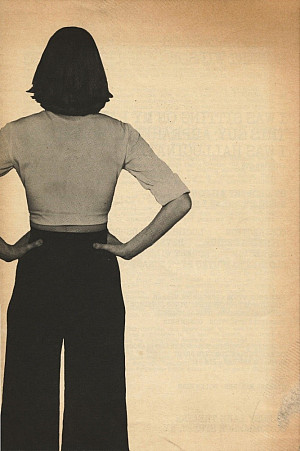38 Commerce Street: Cherry Lane Theatre.

William B. Harris - Walking Tour
About
Robert Wilson’s I Was Sitting on My Patio This Guy Appeared I Thought I Was Hallucinating was an ideal play for William Harris to review. Harris’s simple, absolute love of theatre was the basis on which considerable analytical skill rested. In Wilson’s case, he interviewed Robert Barr, the play’s producer. Then he saw the play, co-directed and performed by Wilson and choreographer Lucinda Childs. Harris absorbed and explained the details of blocking and dialog that made the play work, and was disappointed when the potential audience didn’t get it. Patio closed within three weeks due to lack of audience: “The prices were a little steep but the opportunity to see these two important performers should have attracted more serious theatre-goers than it did.” There was also the opportunity to see such artists in such a setting. In the 1830s, those with farmland in the Greenwich Village area were marketing the land for development. The Gomez family leased land to a developer who laid out Commerce Street. Number 38 was originally part of a brewery. In 1924, when poet Edna St. Vincent Millay saw it, it was a box factory. Millay had been part of the Provincetown Playhouse and was looking for more venues for theatre, and this seemed to be it. In a play on words, the new playhouse became the Cherry Lane Theatre, which sounded so much lovelier than Drury Lane, the premier theatre district in London, and therefore in the English-speaking world at that time. Despite the prominence of its original supporters, Cherry Lane faced all the problems of twentieth century downtown venues. It was one of the earliest Bohemian landmarks to be saved from demolition and replacement by an apartment building; in 1952 it was purchased from the Gomez family in order to be maintained as a theatre. At that point, though, the industry that had attracted immigrants to the Village in the early twentieth century began to decline, and Cherry Lane found itself competing with loft owners for performers looking for space. Owners of performance space found themselves developing their own pipelines of tenants; in 1998 Cherry Lane began a program whereby experienced playwrights guided novices from the initial idea for a script to a performance on Cherry Lane’s stage. Since then, the economic situation has reversed, with many formerly empty industrial spaces converted to loft housing, and performing artists on tight budgets searching for affordable space.